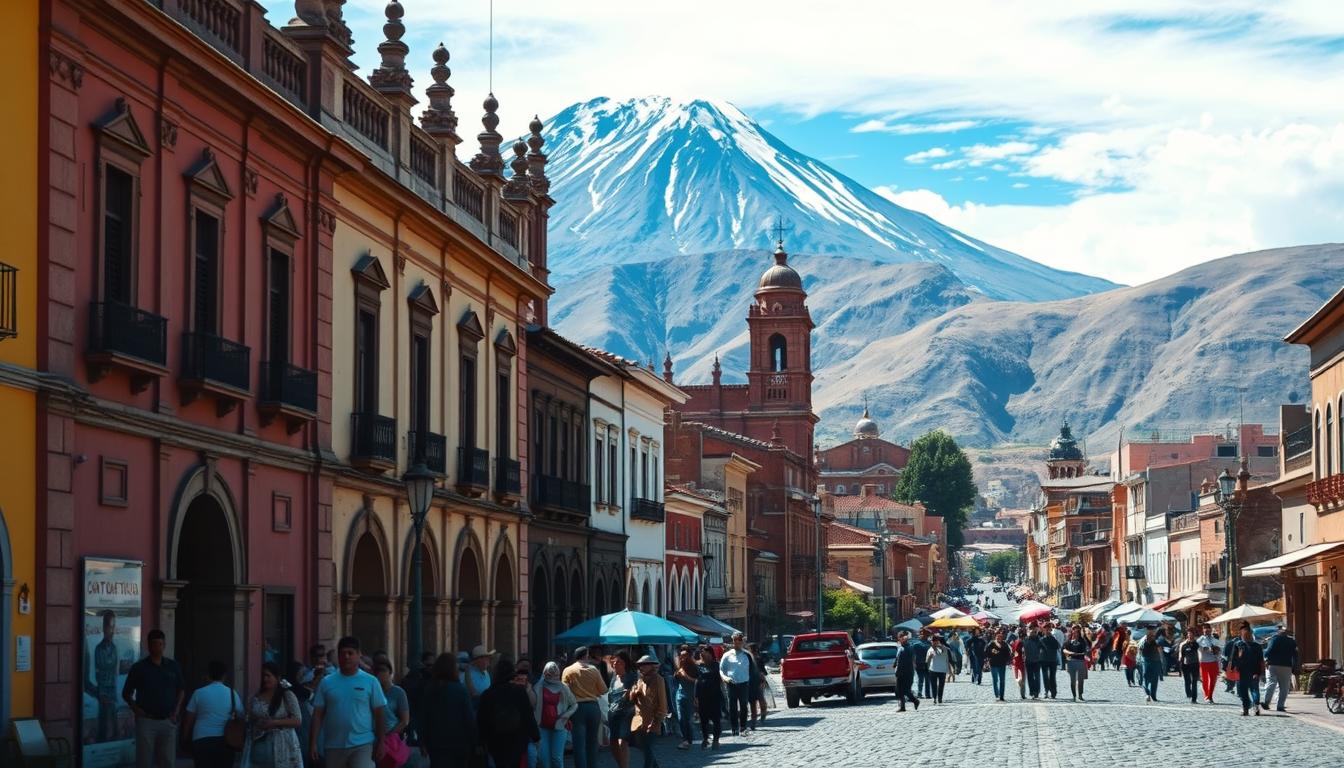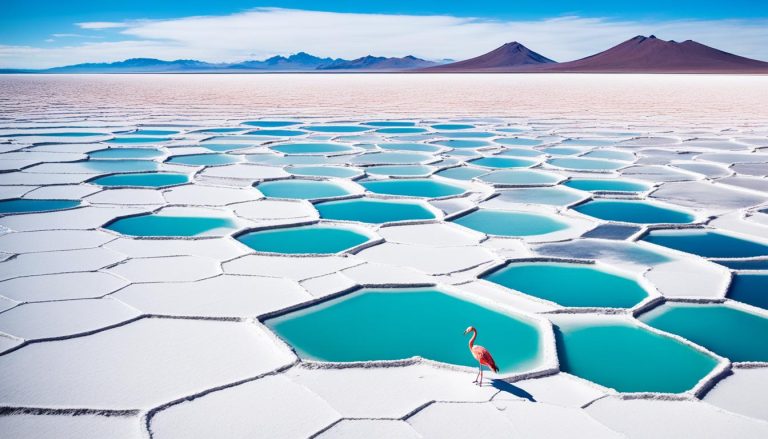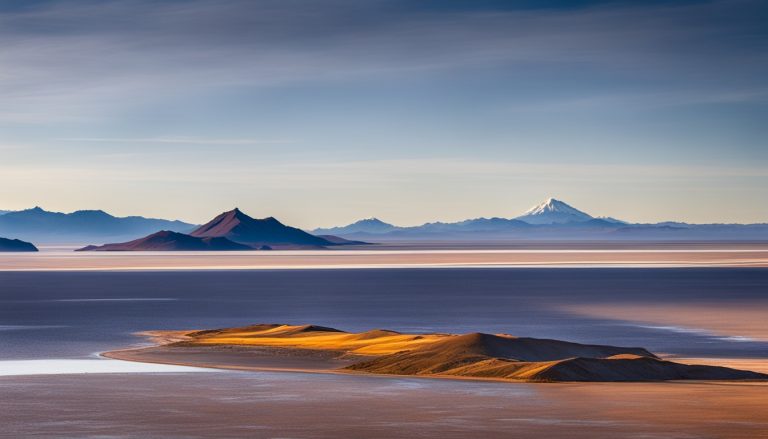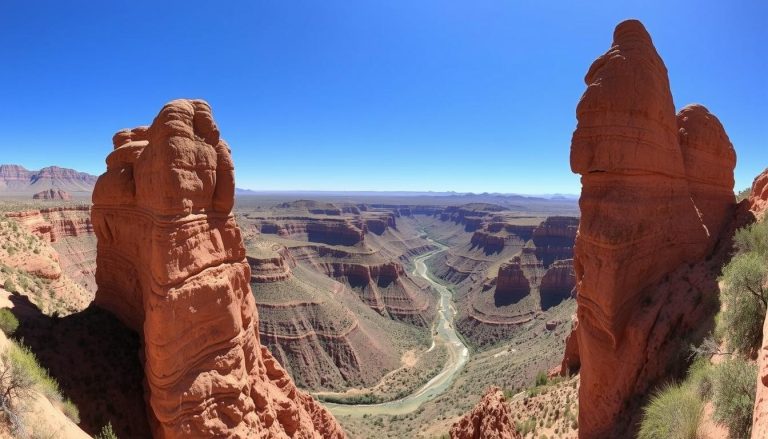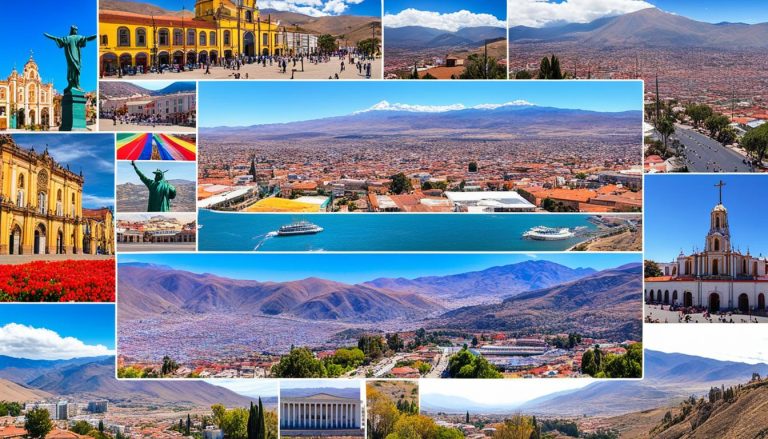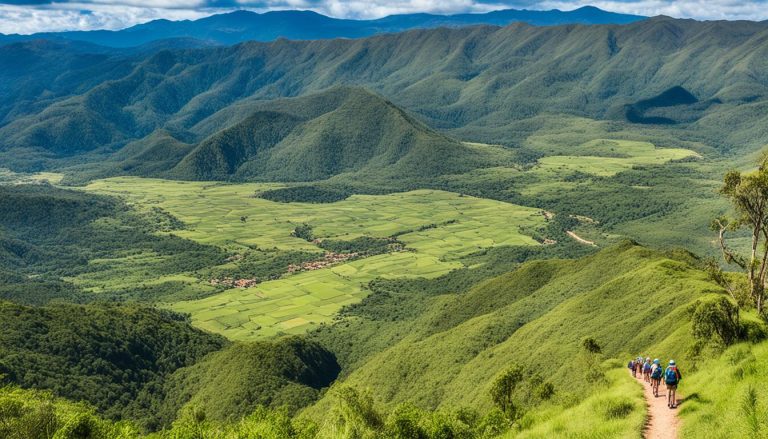Potosí sits high in the Andes mountains of Bolivia. It’s a city full of history, beauty, and culture. The famous Cerro Rico silver mine, beautiful Spanish colonial buildings, and lively Andean traditions make it a unique place to visit. But what makes Potosí stand out, and what are the top things to see? Let’s explore the best attractions in Potosí, Bolivia.
Key Takeaways
- Potosí is famous for its Cerro Rico silver mine, known as one of the most dangerous mines in the world.
- The city’s Spanish colonial architecture, like the Casa Nacional de la Moneda, highlights its deep history.
- Visitors can experience Potosí’s vibrant Andean culture, from the Callejon de las Brujas to the Aymara New Year celebrations.
- Hiking, enjoying the views, and trying local food are all part of the Potosí experience.
- Getting used to the high altitude is important, but the unique city is worth the effort.
Exploring Cerro Rico: The Iconic Silver Mountain
The Cerro Rico, or “Rich Mountain,” stands tall over Potosí. It has been a key part of the city’s history for centuries. This mountain made Potosí one of the wealthiest places in South America by providing a lot of silver.
Guided Mine Tours: A Journey into Potosí's Mining Heritage
Now, visitors can see Potosí’s mining past by taking tours of the Cerro Rico mines. These tours show the tough life of miners. They work in dark, small tunnels under tough conditions.
They use old mining methods that have been around for a long time. It’s a way to understand the hard work and traditions of Potosí’s miners.
Casa Nacional de la Moneda: Discovering Potosí's Silver Production Legacy
The Casa Nacional de la Moneda, or the National Mint of Bolivia, is another piece of Potosí’s silver story. This old building is now a museum. It has many artifacts, machines, and exhibits about Potosí’s silver industry in the colonial times.
Visitors can learn about the silver production process and its importance. This helped shape the region’s history during the colonial era.
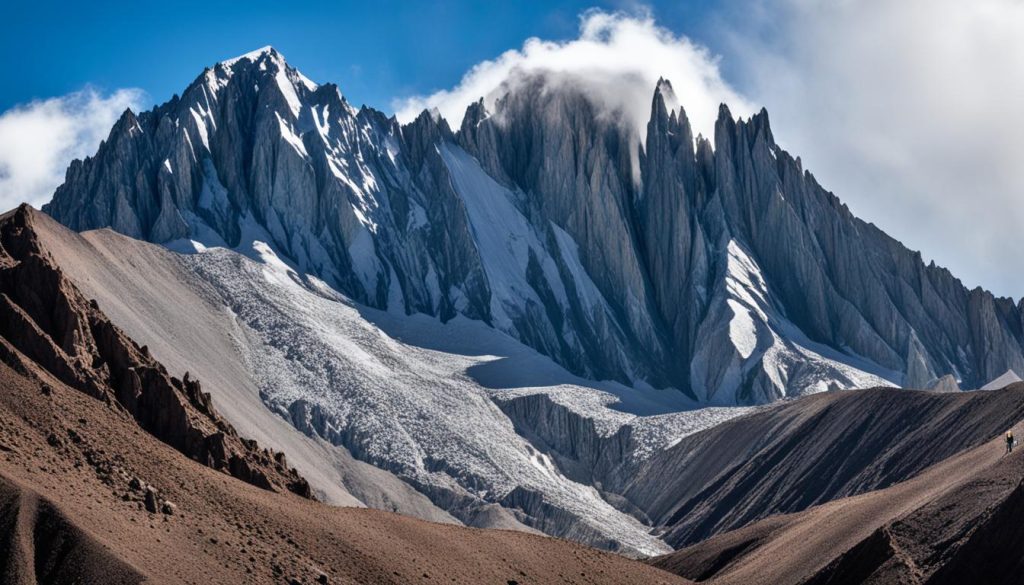
Immersing in Potosí's Colonial Charm
Potosí’s colonial heritage is truly captivating. It shows off stunning architecture and historical sites. The Plaza 10 de Noviembre is a key spot to visit, right in the heart of Potosí’s charm. Walking through this square, you’ll see beautiful colonial buildings and feel the lively street life.
Plaza 10 de Noviembre: The Heart of Potosí's Colonial Architecture
The Plaza 10 de Noviembre is a key piece of Potosí’s history. It has many well-kept colonial buildings. You’ll see detailed church facades and fancy balconies on the historic buildings. It’s a great place to learn about the city’s architecture and history.
Museo de Santa Teresa: Unveiling the Colonial Era's Intriguing History
The Museo de Santa Teresa is perfect for those wanting to learn more about Potosí’s past. It’s in an old convent and has lots of colonial art, artifacts, and old spaces. Walking through, you’ll discover the history and culture of the colonial times. It’s a great way to appreciate Potosí’s heritage.
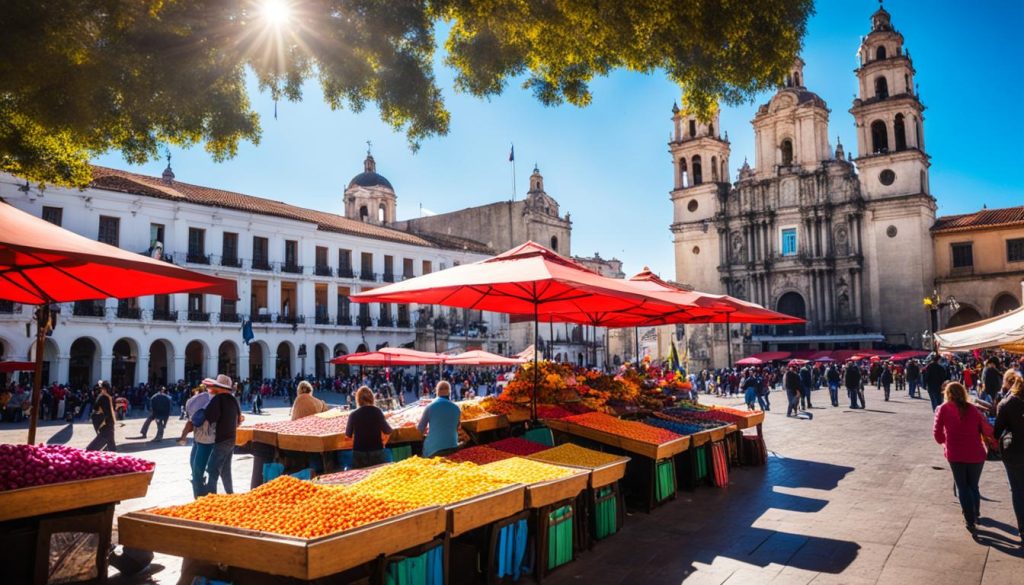
Visiting the Plaza 10 de Noviembre or the Museo de Santa Teresa lets you really feel Potosí’s colonial charm. These places show off the city’s history and culture. They let you see what made the colonial era so special in Potosí.
Potosí's Mystical Allure: The Callejon de las Brujas
For a touch of mysticism, visitors to Potosí can explore the Callejon de las Brujas, or “Alley of the Witches.” This alleyway is filled with stores selling traditional Bolivian remedies and spiritual items. It adds to the Potosí mystique that draws people in.
Walking through the Callejon de las Brujas, you’ll smell incense and see colorful talismans. You’ll hear whispers of local stories. This place shows off Potosí’s deep cultural and spiritual roots.
If you’re looking for a unique souvenir or just want to soak in the mystic vibe, the Callejon de las Brujas is a spot you can’t miss. It’s a memorable part of your Potosí trip.
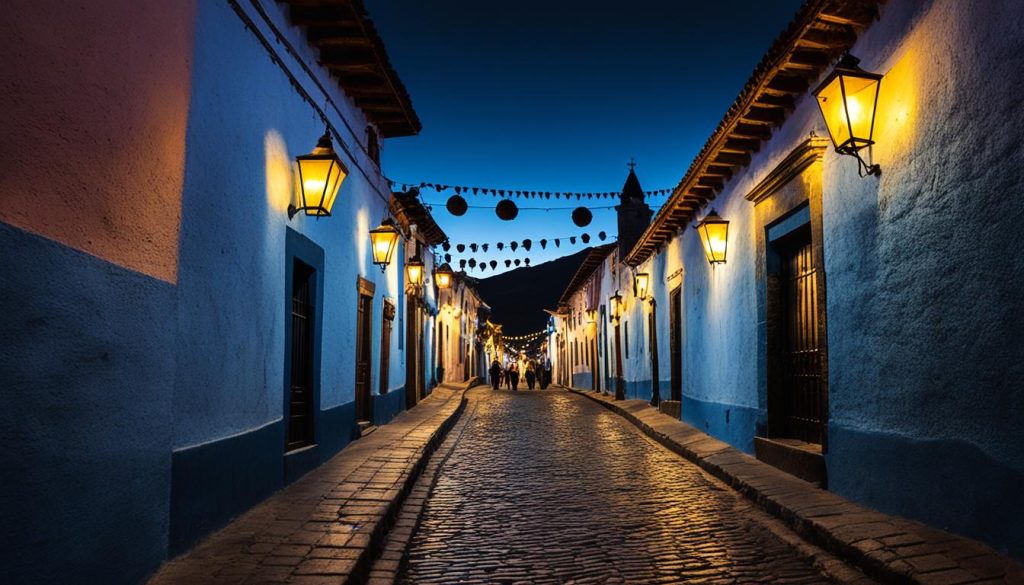
“The Callejon de las Brujas is a truly enchanting and captivating experience, offering a glimpse into the rich cultural heritage and spiritual practices that have defined Potosí for centuries.”
Panoramic City Views: Climbing San Francisco Church
For a bird’s-eye view of Potosí and Cerro Rico, head to the San Francisco Church’s rooftop. Climb the steps to a peaceful spot. There, a rooftop café lets you enjoy coffee while taking in the stunning city view.
Rooftop Café: Sipping Coffee with Incredible Vistas
The rooftop café at the San Francisco Church museum is perfect for enjoying local flavors and Potosí city views. It’s a quiet spot above the busy streets, letting you soak in the beauty of the San Francisco Church and the rooftop cafe.
“The rooftop café at the San Francisco Church museum offers a serene spot to sip coffee and take in the stunning vistas of Potosí.”
While sipping coffee, you’ll see the city and Cerro Rico, Potosí’s mining symbol. This spot gives you a peaceful view, showing off the city’s beauty and nature.
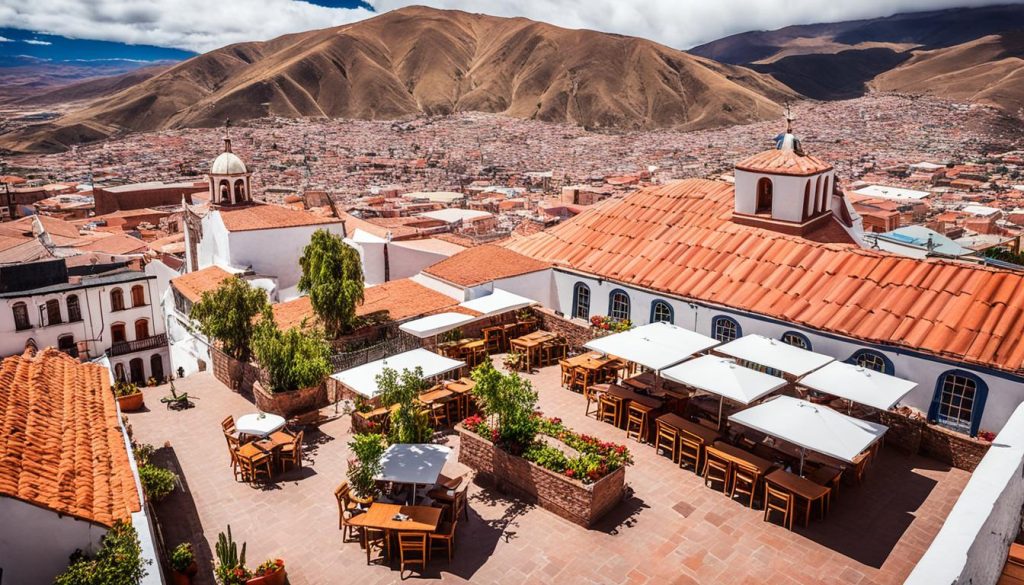
The rooftop café at the San Francisco Church in Potosí is ideal for quiet moments or amazing views. It’s a place that will leave a lasting impression.
Experiencing the Aymara New Year Festivities
In Potosí, Bolivia, you can see the Aymara New Year celebrations. These events show the deep culture of the area. They are full of color and life.
Early Morning Mountain Celebrations
The Aymara New Year starts early, with people going to the mountains. They wear traditional clothes and do sacred rituals. These honor Pachamama, the Andean Mother Earth.
These mountain events show how much the community values nature. They feel a strong bond with the earth.
Aymaran Traditions and Rituals
- Offerings and sacrifices to Pachamama
- Traditional dances and music that celebrate the Aymara heritage
- Rituals to cleanse the spirit and welcome the new year
- Communal gatherings and shared meals
As the sun rises, the Aymara people gather to welcome the new year. They celebrate the change of seasons. This is a chance for visitors to see Aymaran traditions and mountain ceremonies up close.
“The Aymara New Year is a sacred time when we reconnect with our ancestral roots and honor the rhythm of the natural world. It is a moment of profound spiritual renewal and community unity.”
– A local Aymaran community leader
Seeing the Potosí celebrations of the Aymara New Year is unforgettable. It lets you into the world of Aymara traditions. This shows the lasting impact of these traditions on the area’s culture.
Potosí, Bolivia: Best Things to Do - Top Picks
Potosí sits high in the Andes, at 4,090 meters (13,420 feet) above sea level. It’s a city full of history, culture, and natural beauty. Once a key spot for Spanish colonial silver mining, it’s now a top spot for those interested in Bolivian mining history and Andean culture.
The Cerro Rico Silver Mine is a major attraction here. This mountain was once a huge source of silver for the Spanish Empire. Visitors can take guided tours through the mine’s tunnels. They’ll see the hard work of miners, both in the past and today.
The Casa Nacional de la Moneda is another must-see. It was the royal mint and shows Potosí’s silver production history. Near it, the Iglesia de San Lorenzo stands out with its beautiful Spanish Colonial Architecture. It gives a peek into Potosí’s rich past.
Potosí also lets visitors dive into Andean Culture and traditions. The Aymara New Year Festivities are a highlight. They’re a colorful display of indigenous rituals and celebrations.
For those who love the outdoors, Hiking in Potosí is a great option. It lets you see the Andean landscapes and the city’s natural beauty. Potosí Tours are a great way to see everything from mining history to cultural sites.
Potosí is a treasure of Bolivia, with its history, architecture, and culture. It offers an unforgettable trip into the Andes.
Delving into Potosí's Culinary Delights
Potosí, a city in the Andes, is a treasure for food lovers. It’s known for its rich Potosí cuisine. At the center is the salteña, a savory pastry loved by all.
Salteñas: The Irresistible Local Pastry
Picture a flaky, golden crust filled with meat, veggies, and spices. That’s the salteña, a favorite in Bolivia. It’s a must-try for anyone visiting Potosí.
Central Market: Fresh Produce and Local Fare
The local market in Potosí is a feast for the senses. Walk through aisles filled with fresh Bolivian food and lively vendors. Try authentic dishes like hearty stews and aromatic rice while enjoying the vibrant atmosphere.
“The Central Market in Potosí is a true gem, where you can discover the heart and soul of Bolivian cuisine. From the vibrant produce to the irresistible local specialties, it’s a culinary adventure that immerses you in the rich cultural tapestry of this captivating city.”
Navigating High Altitude: Tips and Experiences
Potosí sits high at 4,090 meters, offering breathtaking views but also challenges for travelers. Altitude sickness, like feeling tired, sleepy, or nauseous, is common. Locals use coca leaves as a natural remedy to ease these symptoms.
Coca Leaves: A Natural Remedy for Altitude Sickness
In Potosí, chewing or making tea with coca leaves is a tradition. These leaves have a compound similar to cocaine that helps with altitude sickness. Visitors are advised to try this local remedy to adjust to the thin air.
- Coca leaves can help reduce symptoms of altitude sickness, such as headaches, nausea, and fatigue.
- Brewing coca tea or chewing the leaves can provide a natural boost of energy and help your body adapt to the high altitude.
- Incorporating coca leaves into your daily routine can make a significant difference in your overall well-being during your stay in Potosí.
Stay hydrated, avoid alcohol, and take it easy in the first few days in Potosí. Being aware of the altitude and taking precautions lets you enjoy the city’s culture and beauty fully.
“Chewing coca leaves has been a way of life for the people of the Andes for centuries. It’s an integral part of their culture and a natural remedy that can help visitors like us better cope with the high altitude in Potosí.”
Conclusion
Potosí, Bolivia, is a place full of history, culture, and beauty. You can visit the famous Cerro Rico Silver Mine and see the Spanish Colonial Architecture. Don’t miss the Aymara New Year festivities or the high-altitude adventure.
There’s much to see, like the Bolivian Mining History at the Casa Nacional de la Moneda. Or, enjoy the views from the Iglesia de San Lorenzo. Potosí invites you to learn about Andean Culture and take part in Potosí Tours that highlight the city’s history and beauty.
When planning your trip to Potosí, get ready for the high altitudes. Bring the right gear and think about Hiking in Potosí for a thrilling experience. Potosí is a great choice for travelers looking for adventure and culture without spending a lot.
